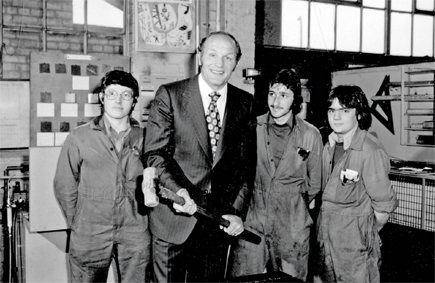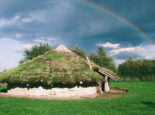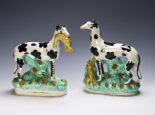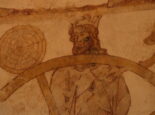Perkins is Peterborough
[prev] …month after the war ended, and was complete by 1947, after which it started producing 100 engines a day for Perkins’ 101 customers.
Perkins started the 1950s turning out 25,000 engines a year and employing 2,850 people. By the end of the decade, this had ballooned to 75,000 engines and 7,000 workers, helped in no small way by its 4.99 engine, which found its way into popular family cars by Ford, Vauxhall, Morris and Hillman. The company was also floated on the London Stock Exchange, which raised considerable cash for expansion and export drives. But this also allowed Canadian firm Massey Ferguson to acquire enough shares to take over in 1959, when Perkins ran into choppy financial waters with its problematic R6 engine and the Suez Crisis. The Massey Ferguson acquisition saw Frank Perkins step down as managing director after 37 years’ service, with the entire shop floor turning out to sing For He’s a Jolly Good Fellow on his final day, a testament to his popularity as a boss and the sense of family and community within the company he instilled. This legacy continues to some extent even today. ‘My colleagues in Brazil used to speak of La Familia Perkins; the Perkins family,’ remembers David. ‘It was a family company, even when there were 10,500 people on this site, back in the 1970s. And there’s still, I think, the remnants of that feeling despite the fact that we are now just a small part of a very big worldwide group.’
Revitalised under Massey Ferguson ownership and with the benefits of a greater global marketplace, Perkins’ rise continued, with 200,000 engines made during 1964 and a Queen’s Award for Export Achievement won two years later. Perkins manufacturing also spread to Argentina, Turkey, Mexico, Bulgaria, Brazil and Japan, via licensing agreements.
‘That strategy, of licensee relationships, has largely vanished in the modern business environment, but at the time, it was a very important part of helping Perkins grow,’ says the company’s marketing director and chairman of the Heritage Group, Nigel Baseley. ‘That was one of the key things in getting us established around the world. We couldn’t have expanded in the way we did without these partnerships.’
A blue plaque is the only reminder that this is where the world’s first high-speed diesel engines were built
Despite the 1970s being difficult times, Perkins weathered the storm better than many, even managing one year to manufacture almost 270,000 engines, a record achievement. In 1975, a staggering 500,000 Perkins’ engines were built around the world. However, there was some fall-out from the economic strife being suffered throughout the UK, with short-time working being introduced and the firm’s first redundancies exercises. Elsewhere though, Peru, Pakistan, Iran, South Africa and Uruguay were now producing the company’s products under licence, with a brand new engine facility opened in Poland. As if symbolic of how internationally focused and vast Perkins had become, one of the last links with its earliest days was severed with the old Queen Street plant – used for rebuilds and spares – demolished. In its place came the Queensgate Shopping Centre. A blue plaque, unveiled by Queen Beatrix of the Netherlands during its official 1982 opening, is the only reminder that this is where the world’s first high-speed diesel engines were built.
Perkins was less fortunate in the 1980s. The global recession that kicked off the decade initially struck the sprawling parent Massey Ferguson Corporation more than Perkins itself, but the effects filtered down throughout the conglomerate, and Perkins found itself reducing its workforce and plants. Engine production, which had been running at over… [cont]
















